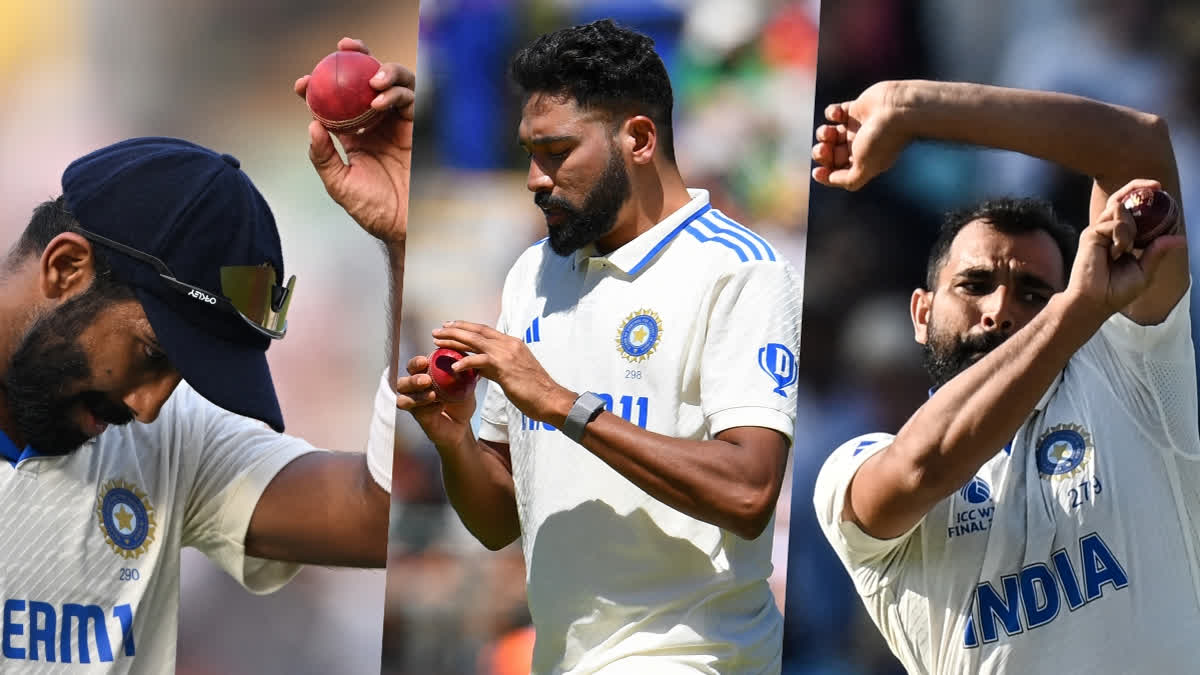The Rohit Sharma-led Indian Cricket Team's dominance at home is visible. Team India hasn't lost any Test series in their own backyard since 2012. The cricket pundits and experts connect their success with spin-friendly tracks but often ignore how the SG Test ball plays a vital role in it and why visiting countries struggle with these balls.
In cricket, the nature of the pitch and weather conditions greatly impact the game. Similarly, the season or leather balls used in cricket, especially in Tests play a huge role. Hence, the host countries tend to use home conditions to their advantage.
Notably, different countries use different company balls mainly because of historical reasons, manufacturers and conditions that suit local pitches and playing styles. There are no strict regulations that mandate the use of a specific company's ball for matches across the globe. However, certain norms have been imposed and changed over the years, particularly in Test cricket, where different balls are used depending on the hosting nation.
WHAT'S THE LAW ON MANUFACTURING CRICKET BALLS
According to Law 4.1 of The Laws of Cricket, a new ball must weigh between 155.9 grams and 163 grams and the circumference must be between 22.4cm and 22.9cm. With such strict regulations in place, the detail and expertise required in the manufacture of cricket balls remains key.
CRICKET BALLS PREDOMINANTLY USED IN CRICKET
Three major cricket ball companies are Dukes in the UK, SG in India and Kookaburra in Australia.
HISTORY OF MAJOR CRICKET BALLS USED IN CRICKET AND REASONS FOR USING THEM IN DIFFERENT COUNTRIES
1. The SG Ball: SG balls have a wider seam which remains in shape at least for 40-50 overs. The dry conditions in India force the ball to lose the shine of the ball very quickly but assist bowlers with reverse swing after 40 overs of play. and hence seam needs to be elevated. This phenomenon doesn't match with other balls like Dukes and Kookaburra.
Notably, SG is the abbreviation for Sanspareils Greenland's ball, which was set up by Kedarnath and Dwarkanath brothers in Sialkot in 1931. Post-independence, its base shifted to Meerut. SG balls were then approved by the BCCI for its usage in Test matches in 1991.
2. The Dukes’ Ball:
Dukes’ ball is the oldest of all balls used in international cricket and it's darker in colour compared to the others. The ball is entirely handmade and takes a longer time to get old. Dukes ball achieves the greatest magnitude of movement in conditions of England where the temperature is around 20-25 degrees Celsius even in the summers. and arguably the best English pacers who have extracted the most help from this ball are James Anderson and Stuart Broad, having taken over 1300 wickets in the longest format of cricket. Only two countries use the ball in all forms of the game, namely England and West Indies.
The origin of the ball dates back to 1760 when the production started at Tonbridge in the United Kingdom.
3. The Kookaburra Ball: The Australian Cricket Board introduced the kookaburra balls to world cricket during the 1946/47 Ashes series. The Kookaburra is entirely made using machines and its seam is the least prominent when compared to others hence it doesn't swing as much as the Dukes cricket ball. The ball assists pace bowlers with movement up to 30 overs and stays hard for a longer period. Australia, South Africa, Pakistan, Sri Lanka and South Africa, are chief users of Kookaburra balls in international as well as domestic cricket.
The Kookaburra ball is internationally acclaimed as the number-one ball manufacturer and was established in 1890. It has been a chief manufacturer of cricketing goods for the last 128 years. Its factory is based in Melbourne, which uses some of the finest raw materials using state-of-the-art facilities.



